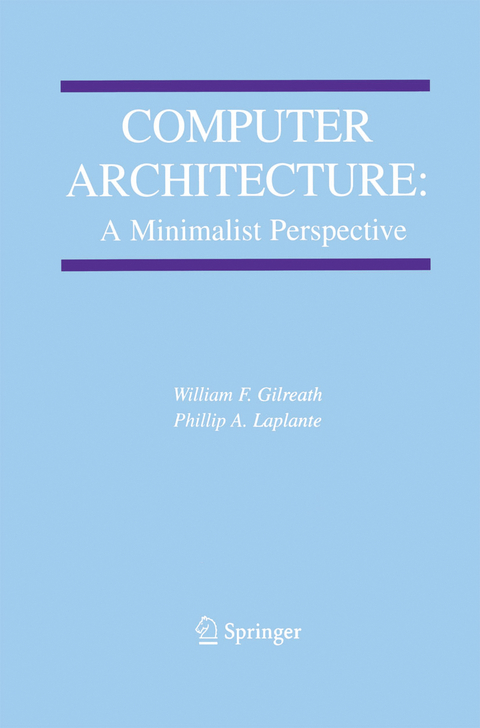
Computer Architecture: A Minimalist Perspective
Springer-Verlag New York Inc.
978-1-4020-7416-5 (ISBN)
1. One Instruction Set Computing.- 1.1 What is One Instruction Set Computing?.- 1.2 Why Study OISC?.- 1.3 A Look Ahead.- 1.4 Exercises.- 2 Instruction Sets.- 2.1 Elements of an Instruction.- 2.2 Operands.- 2.3 Instruction Formats.- 2.4 Core Set of Instructions.- 2.5 Addressing Modes.- 2.6 Exercises.- 3 Types of Computer Architectures.- 3.1 Overview.- 3.2 A Simple Taxonomy.- 3.3 Accumulator.- 3.4 Register-Memory.- 3.5 Register-Oriented.- 3.6 Exercises.- 4 Evolution of Instruction Sets.- 4.1 Motivation.- 4.2 Evolution of Microprocessors.- 4.3 Timeline.- 4.4 Exercises.- 5 CISC, RISC, OISC.- 5.1 CISC versus RISC.- 5.2 Is OISC a CISC or RISC?.- 5.3 Processor Complexity.- 5.4 Exercises.- 6 OISC Architectures.- 6.1 Single Instruction Types.- 6.2 MOVE.- 6.3 Comparing OISC Models.- 6.4 Variants of SBN and MOVE.- 6.5 OISC Continuum.- 6.6 Exercises.- 7 Historical Review of OISC.- 7.1 Subtract and Branch if Negative (SBN).- 7.2 MOVE-based.- 7.3 Timeline.- 7.4 Exercises.- 8 Instruction Set Completeness.- 8.1 Instruction Set Completeness.- 8.2 A Practical Approach to Determining Completeness.- 8.3 Completeness of Two OISCs.- 8.4 Exercises.- 9 OISC Mappings.- 9.1 Mapping OISC to Conventional Architectures.- 9.2 Synthesizing Instructions.- 9.3 Code Fragments.- 9.4 Implementing OISC using OISC.- 9.5 Exercises.- 10 Parallel Architectures.- 10.1 Von Neumann Bottleneck.- 10.2 Parallel Processing.- 10.3 Flynn’s Taxonomy for Parallelism.- 10.4 Exercises.- 11 Applications and Implementations.- 11.1 “OlSC-like” Phenomena.- 11.2 Field Programmable Gate Arrays.- 11.3 Applications.- 11.4 Image Processing.- 11.5 Future Work with OISC.- 11.6 Exercises.- Appendix A: A Generic Microprocessor and OISC.- Appendix B: One Instruction Set Computer Implementation.- B.1 6502 Opcodes Summary.- B.2 6502Opcodes Mapped to MOVE OISC.- B.3 6502 Addressing as MOVE-based OISC.- B.4 6502 Addressing Modes and MOVE-based OISC.- Appendix C: Dilation Code Implementation.- Appendix D: Compiler Output for Dilation.- Appendix E: OISC Equivalent of Dilation.- References.- About the Authors.
| Reihe/Serie | The Springer International Series in Engineering and Computer Science ; 730 |
|---|---|
| Zusatzinfo | XV, 220 p. |
| Verlagsort | New York, NY |
| Sprache | englisch |
| Maße | 155 x 235 mm |
| Themenwelt | Mathematik / Informatik ► Informatik ► Datenbanken |
| Mathematik / Informatik ► Informatik ► Software Entwicklung | |
| Informatik ► Theorie / Studium ► Künstliche Intelligenz / Robotik | |
| ISBN-10 | 1-4020-7416-6 / 1402074166 |
| ISBN-13 | 978-1-4020-7416-5 / 9781402074165 |
| Zustand | Neuware |
| Informationen gemäß Produktsicherheitsverordnung (GPSR) | |
| Haben Sie eine Frage zum Produkt? |
aus dem Bereich


